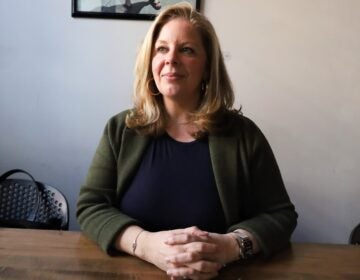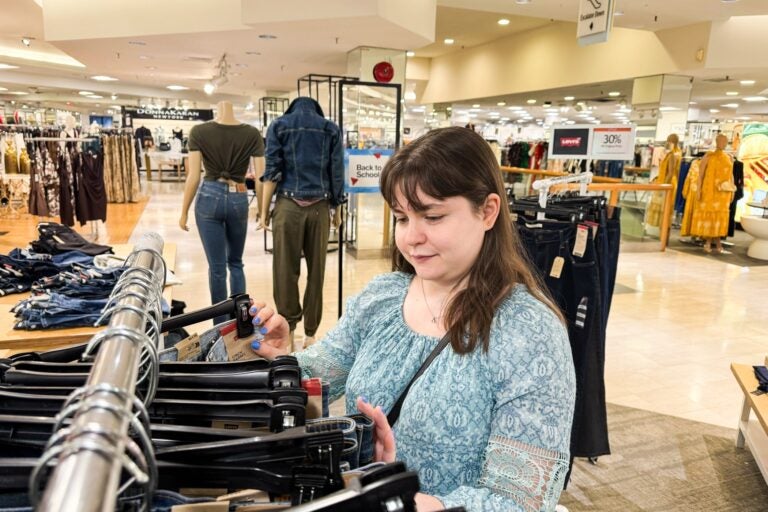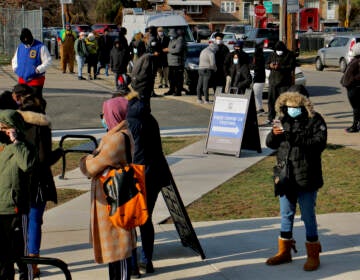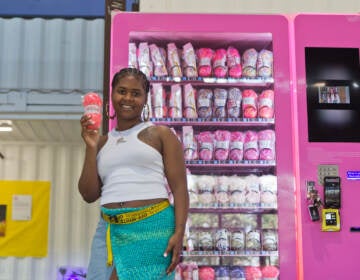Functional yet stylish: People with chronic conditions call for inclusivity in fashion industry
Advocates are calling on the fashion industry to consider clothing that provides access to medical devices, have adaptable waistbands or are made of breathable fabrics.
From Philly and the Pa. suburbs to South Jersey and Delaware, what would you like WHYY News to cover? Let us know!
Sierra RyanWallick loved wearing figure-hugging, athletic clothes — they made her feel strong and confident.
But after the Chester County resident was diagnosed with endometriosis, which causes stomach pain and severe bloating, she had to donate half of her garments. Today, only one pair of shorts are folded in RyanWallick’s minimalist dresser.
Dysautonomia, a nervous system disorder, which for RyanWallick causes chest pressure, also forced her to clear out her tight tops and sports bras.
Today, RyanWallick opts for comfortable loungewear, such as soft, oversized T-shirts, hoodies and sweatpants. But she can’t get herself to part with her favorite army green cotton jumpsuit, which remains on a hanger in her closet because it’s too snug in the torso.

“Having to rethink my entire wardrobe was a shock, and really frustrating to slowly have all my favorite pieces taken away from me and having to make all these adjustments,” RyanWallick said.
More than half of the U.S. population has at least one chronic illness and women experience them at higher rates, according to the Centers for Disease Control and Prevention. However, people with chronic conditions say their needs are often ignored by the fashion industry.
The fashion industry has made some strides — brands from Tommy Hilfiger to Anthropologie have launched adaptive clothing lines for consumers who live with various physical disabilities, as well as some health conditions.
“The industry has really started to understand that people with disabilities are consumers, and … understand the power of people with disabilities to the tune of $13 trillion that’s being left on the table,” said Mindy Scheier, founder of Runway of Dreams, an organization that has guided fashion brands, including Tommy Hilfiger, on how to be more inclusive.
However, there are still only a handful of adaptive lines, and their designs don’t always tailor to the needs of consumers who live with chronic illnesses.
People with chronic conditions that sometimes go unnoticed say stylish pieces that work for them are few and far between. Shoppers, health advocates and designers are calling on the fashion industry to consider clothing features that conceal and provide access to medical devices and medications, have adaptable waistbands or are made of soft and breathable fabrics.
“It feels like these women are in this invisible world in which they can’t get support from mainstream clothing, and they can’t get support from adaptable clothing either,” said Emilie Delaye, a graduate student at the University of Delaware who is researching the fashion needs of women with chronic illnesses.
Delaye’s struggles to find functional yet fashionable apparel inspired her to delve into the issue as a researcher.
She has been diagnosed with Lyme disease and Ehlers-Danlos syndrome, a connective tissue disorder. Delaye found it difficult to use buttons and zippers and get clothes over her head.
Her Lyme disease treatment required a peripherally inserted central catheter, or PICC, line in her arm and an at-home chest port. Delaye said constantly having to raise her T-shirt was dehumanizing.
“I experienced firsthand what it was like to all of a sudden have clothes — one of my favorite things about the day — be one of my least favorite things about the day,” said Delaye, who wants to partner with brands to help her run larger focus groups for her research.
She interviewed women living with varying conditions, from lupus to rheumatoid arthritis, who said they feel ignored by the fashion industry.
Maintaining an identity
When adaptive attire is available, it often lacks style or caters to older shoppers, according to Delaye’s research.
Cynthia Adinig, of Vienna, Virginia, said she can relate. Fashion was her life — she learned how to sew as a young child, designed her own garments in high school and eventually created a fan-made K-Pop clothing line in the U.S. She has been diagnosed with several chronic conditions including long COVID-19, postural orthostatic tachycardia syndrome, or POTS, and multiple chemical sensitivity.
Adinig’s fragrance allergy means she can no longer wear clothes that have been laundered with even the most gentle detergents. Her nose can’t tolerate high-neck designs, and certain fabric textures cause itchiness.

Adinig, 40, said she struggles to find stylish clothes that are fitting for her age and don’t trigger her symptoms.
“Most people think that you would need this kind of stuff if you’re 70 or 80, and so a lot of these brands don’t design for our age group,” she said, adding that finding adaptive brands that celebrate Black culture is also difficult.
Now Adinig, a health advocate and the co-founder of the BIPOC Equity Agency, feels as though her self-expression and identity are constricted.
“It’s very much like a piece of me is missing,” she said.
RyanWallick, the Chester County resident who cleaned out her closet, said she too felt a loss of identity when she replaced her form-fitting clothing with loose, comfy outfits.
She resorted to do-it-yourself hacks, taking a pair of scissors to the sleeves of her favorite tennis sweater, because her body can’t maintain a normal internal temperature.
However, RyanWallick has adapted and now views herself differently when she looks in the mirror.
“I don’t dress for the male gaze anymore,” she said. “I really try to put myself first and not think about if people judge me for wearing sweatpants out in public. Well, they don’t know how much pain I’m in.”
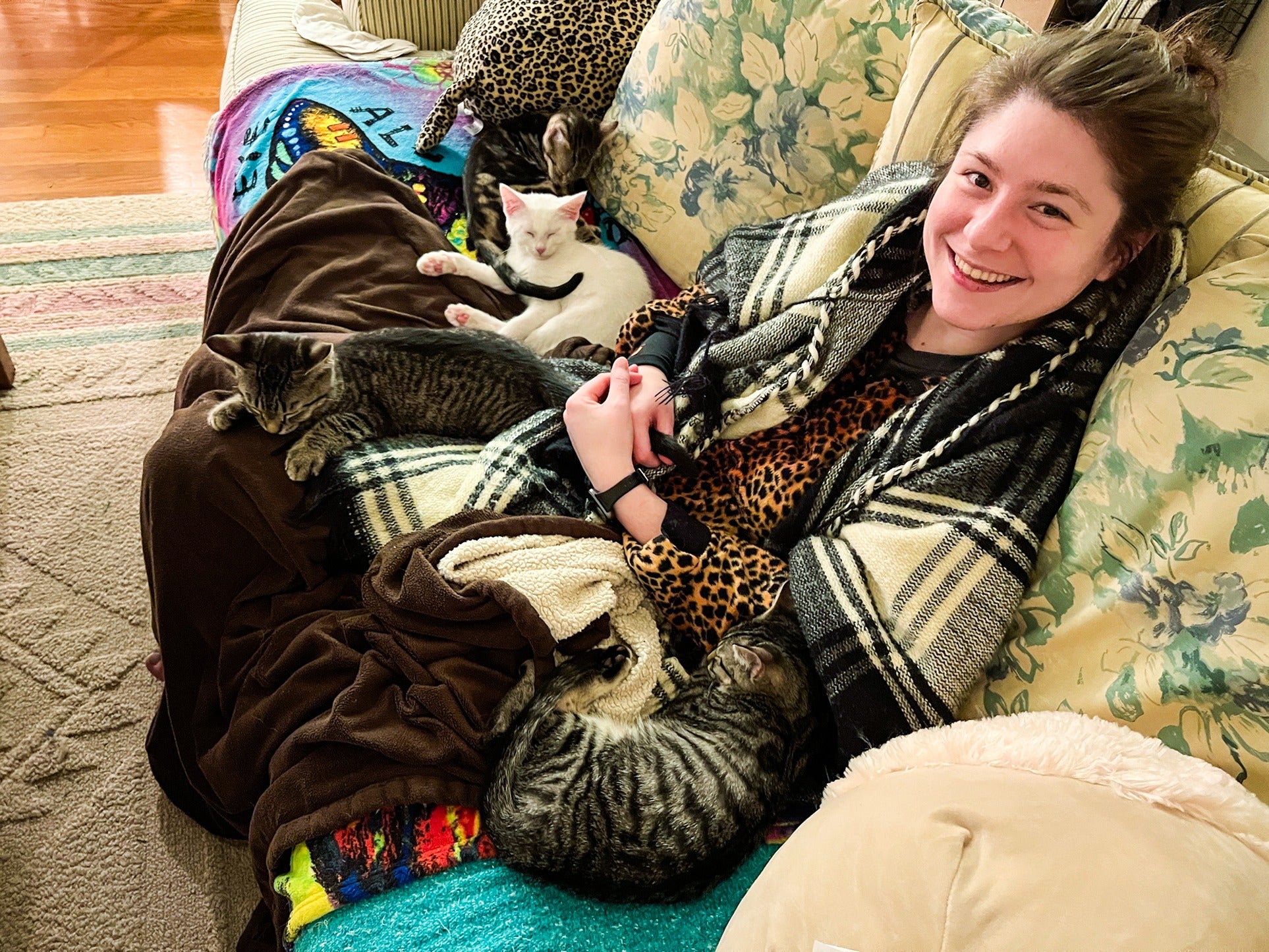
The lack of available adaptive clothing lines has also changed Sarah Bailey’s shopping habits. The Chester County resident said she has a few quality clothes, rather than a closet full of fast fashion, which can impact the environment.
However, Bailey said she still wishes fashion was more adaptable.
She was diagnosed with dysautonomia, a dysfunctional autonomic nervous system, and has gastrointestinal issues such as severe bloating and nausea. Tight clothing and high necklines can compound those symptoms, while elastics can cut off her blood circulation and make her feel lightheaded.
“Denim is one of my least favorite materials because of how little give it has. I couldn’t tell you the last time I wore jeans,” she said as she browsed the clothing racks at the King of Prussia mall. “It can be exhausting trying on the many different styles they have just to find the one that works for you.”
On occasion, Bailey has purchased a garment simply because she loves it. She recalls how excited she was to wear a mint green chiffon dress to her best friend’s wedding last year, only to spend most of the night in the changing room when the frock exacerbated her nausea.
“The last five hours of the evening, I spent just trying not to throw up, and it was rough,” Bailey said. “That was definitely one of those moments that hit me, ‘I’m different. I don’t get to enjoy the evening with my friend and my other friends.’”
Championing change
Briony Corbett of the Ehlers-Danlos Society said she too has experienced feeling left out, particularly when she was growing up.
“Most stuff that they give you that is practical is not very fashionable, so you definitely feel a bit of embarrassment growing up, and a bit of isolation from your peers in school when you’re wearing special orthopedic shoes and special compression stuff, or you’re carrying around a bag that’s got medication in it,” she said.
Corbett said adaptive apparel is often produced by people who have never lived with chronic conditions, meaning their customers’ needs are often unmet in the designs.

However, over the past year, she’s seen a rise in adaptive lines designed by people who have experienced chronic health symptoms. The Ehlers-Danlos Society aims to shed light on those brands online and during conferences.
The organization recently partnered with New York fashion designer Haley Schwartz, who launched Vertige Adaptive to offer functional fashion.
Her line includes pants with adjustable waists, dresses with pockets that can hold medical devices or include hidden openings for feeding tubes, and shirts adorned with snaps that allow people to feel modest while getting infusions or receiving treatments through ports.

“What I wanted to do the most was create something that was both functional, but also fashion-forward that people actually wanted to put on their body and could make them feel confident and good about themselves,” said Schwartz, who has dysautonomia and a heart condition.
She said she would like to see an increase in the number of adaptive fashion brands. However, the high cost of producing this attire — often for a smaller market of people who sometimes have expensive medical bills — is a major roadblock.
“I think right now it’s just so expensive to make and that doesn’t necessarily work for people,” Schwartz said. “I would like to see it on different scales. I’d like to see more luxury adaptive clothing and adaptive clothing that doesn’t cost a lot, just like everyone else has those options.”
Scheier of Runway of Dreams said she hopes adaptive attire will be included in all mainstream lines.
“I hope someday that there doesn’t even necessarily need to be different adaptations and/or universal because everybody is wearing magnetic closures, or different fits that will work for the population at large,” she said. “There should absolutely be solutions that allow the most amount of people to be able to wear the same products. I think we’ve made some incredible progress in the past decade, but we have so much more to do and we are getting there.”


Get daily updates from WHYY News!
WHYY is your source for fact-based, in-depth journalism and information. As a nonprofit organization, we rely on financial support from readers like you. Please give today.



